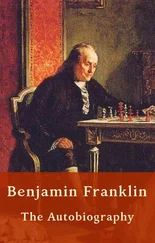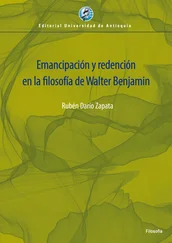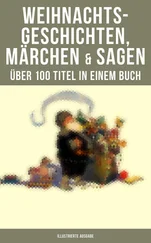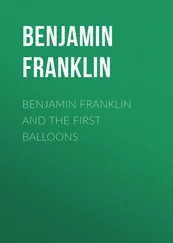After she returned home, Emma got right back to work, because she had promised Auguste she would embroider the letters A. v. T. on six handkerchiefs … Auguste and Wilhelmine sat down on either side of her; Charlotte and Sophie, who had brought their work with them, sat down, too. It was a pleasant sight to see the four young girls occupied so industriously, each eager to outdo the others.
While they were working, Auguste wanted to use the time for additional instruction. So she asked Emma:
“What day is it today?”
“I think it is Tuesday.”
“You are wrong, child! Yesterday was Sunday.”
“Then today is Monday.”
“Right, Monday. How many days are there in a week?”
Seven.
“But how many in a month? — Do you know?”
“How many? — I seem to recall you told me numerous times already that in regard to the days the months are not all the same.”
“I did tell you that. Four months have thirty days, seven thirty-one, and one alone has twenty-eight and sometimes twenty-nine.”
“Thirty days. That’s very long.”
“Can you count that far?”
“No!”
“How many fingers do you have?”
“Ten.”
“Count those fingers three times and then you will have thirty, the same amount as four months of the year have days.”
“That is a saeculum.”
“A saeculum? — Where did you pick that word up. — Do you know what a saeculum is?”
“No, I don’t.”
“And you use a word that you don’t understand? — That smacks of showing off! You want to be thought smarter than you are. A saeculum consists of one hundred years, a year of twelve months, a month consists, as I’ve already told you, of sometimes thirty, sometimes thirty-one days, with the exception of one every year. A day consists of twenty-four hours. The hours are divided into minutes and these again into seconds. The number of the latter amount to sixty in an hour.”
“It’s true, isn’t it? A second is something very negligible?”
“A second flies away like lightning, it’s a blink of an eye.”
“So a person’s life consists of an endless number of seconds?”
“And still it races away very quickly. In its fleetingness, we should never forget the passage to another world, which is to say we should never forget to try to fulfill our duties to God, to our fellow human beings, and to ourselves so that when the Creator and Ruler of the Universe decides in his all-knowing wisdom to call us we will be deemed worthy to enter Heaven, where our reward is awaiting us if we have behaved devoutly and honestly on Earth.”
“But what will happen to the little girls who behave badly?”
“They go to hell.”
“Are they unhappy there?”
“Oh, certainly! They feel the agonies of remorse for their offenses for all eternity.”
“For all eternity? — Oh, I will take great care never to behave badly.”
Auguste saw that Emma could not understand this as clearly as she could, as she had read about it in her catechism and had it thoroughly explained to her. She would have acted more wisely if she had frightened her little pupil not with hell but with the cane or Knecht Ruprecht. 8
There can hardly be anything more bizarre than this, but there is better. Despite Johanna Spyri’s beautiful, justly famous Stories for Children and Those Who Love Children , 9it is characteristic that the later direction of children’s literature produced no masterwork. But we do possess a masterpiece from the moral-edifying literature that is also a masterpiece of the German language: Hebel’s The Treasure Chest . 10It is not, as we know, writing for young people in the strictest sense. After all, it emerged wholly from the philanthropic interest in the broad mass of readers, particularly rural readers. 11If one is even permitted to attempt to describe this incomparable prose writer, in whom the wide range of the epic poet merged with the In German folklore, Knecht Ruprecht is the companion of Saint Nikolaus, who children are told comes to the house on December 6 leaving sweets, nuts, and small gifts for good children. Knecht Ruprecht is Saint Nikolaus’s alter-ego, usually depicted wearing dark fur or straw on a brown, hooded cloak and carrying a switch and a sack, sometimes filled with coal or ash, sometimes to pop an errant child into it. While Saint Nikolaus consults a book in which the good and bad deeds of a child are listed, Knecht Ruprecht waits to hear of bad deeds and draws closer to a child every time one is mentioned. Knecht Ruprecht still appears in processions, particularly in Southern Germany. In his German Mythology, Jacob Grimm associated Knecht Ruprecht with pre-Christian house spirits. [Trans.] conciseness of the lawmaker to form an almost unfathomable whole, then it is imperative to recognize how the Enlightenment’s abstract morals are overcome with the political-theological in Hebel. Just as in Hebel, this never proceeds in any other manner than the casuistic, from one case to the next, so it is also hardly possible to present a concept of it in any way other than very concretely. In an image. When he tells his stories, it is as if a watchmaker were showing us a clockwork and explaining and elucidating each of the springs and little gears. Suddenly (his moral is always sudden) he turns it around, and we see how late it is. And in this, too, these stories are like a clock in that they awaken in us our earliest, childlike amazement and do not stop accompanying us all our lives.
A few years ago, as tends to happen from time to time, a literary magazine had the idea to ask a number of well-known people about their favorite childhood book. There were certainly some books written for children among the responses. But it was curious that the great majority named works such as The Leatherstocking Tales, Gulliver, Treasure Island, The Adventures of Baron Münchausen, the 1001 Nights, Andersen, Grimm, Karl May, Wörishöffer; and some works that were long forgotten and whose author they could no longer name. If one tries to bring some order to the multifarious responses, then the following is revealed: almost never mentioned are books that were written for children or young people. Again and again it is the great works of world literature, books of colportage, fairy tales that are mentioned. Among those who responded to this survey is Charlie Chaplin, with David Copperfield ., 12And here is a great case from which we can study what a children’s book can mean, that is to say, a book that a child resolves to read. David Copperfield prepared the space for this man’s great intuition. A French critic drew a parallel, with great insight, between the art of Dickens and that of Chaplin. And Chaplin “himself has said how he first had the idea to set the character of the man with the bowler hat, the little, choppy steps, the small, closely cropped mustache, and the bamboo cane out into the world when he saw the lesser employees of the London Strand district.” But how close the other characters in his films are to the dark London of Oliver Twist or David Copperfield: “the young, shy, winning girl, the burly lout, who is always just on the verge of lashing out with his fists and who flees when he sees that one is not afraid of him, and the pretentious gentleman, recognizable by his top hat.” 13
However, one should not think that an adolescent can only receive substantial, hearty nourishment from the masterpieces of Cervantes or Dickens, Swift or Defoe. It can be found just as well in certain — admittedly not all — works of colportage or pulp fiction, which appeared simultaneously with the upswing in technical civilization and that leveling out of culture, which was not without a connection to it. The dismantling of the old, spherically tiered order of life had been completed by that time. In the process some of the finest, noblest substances often ended up at the bottom. Thus, the person who sees more deeply will find the elements he is searching for precisely in the depths of written and illustrated works instead of in the acknowledged cultural documents, where he has searched for them in vain. With thoughts such as these, Ernst Bloch attempted to rescue the panned Karl May in a beautiful essay written recently. 14And one could name so many books here, books one borrowed from the school library on library day or even books one dared to ask for in a newspaper store with quiet shame: The Regulators in Arkansas, Beneath the Equator, Nena Sahib . 15And if it was precisely these books that reached beyond the horizon of their young readers in some spots, then that only made them more impressive and full of life. For with their expressions and concepts they seemed to hold the talisman that would guide one over the threshold of youth into the promised land of manhood. And that is why they have been devoured ever since.
Читать дальше












